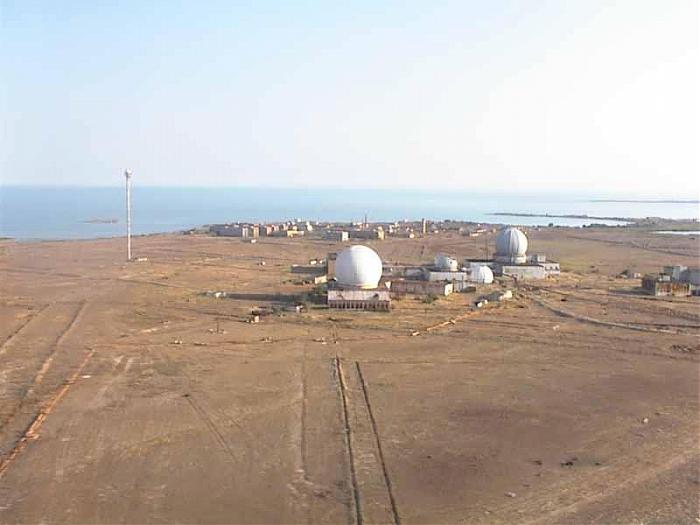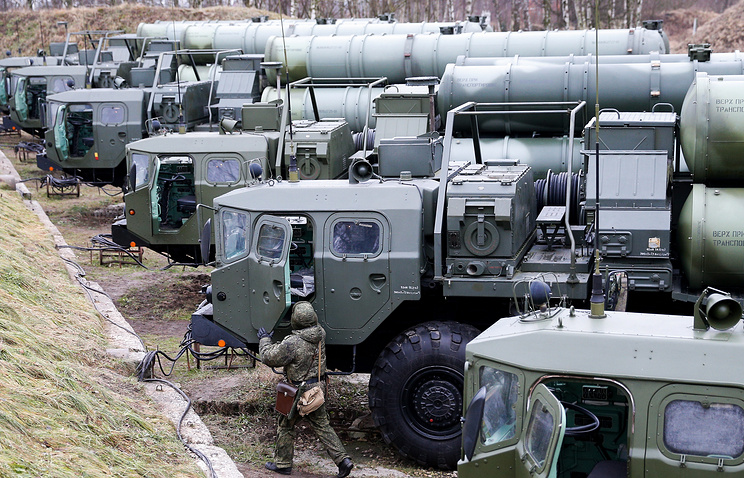Hindustani78
BANNED

- Joined
- Apr 8, 2014
- Messages
- 40,471
- Reaction score
- -47
- Country
- Location
12:41
Moscow's missile defense system capable of intercepting all existing ballistic missiles - Russian Aerospace Forces
12:23
New ABM tests to be held in next 2-3 years in Russia - Russian Aerospace Forces
14:10
Moscow missile defense system involved in ensuring security of ISS in orbit - Russian Aerospace Forces
14:06
Launches of Proton-M carrier rockets to resume in 3.5 months, 3 rockets to be dismantled to replace engines - Rogozin

In two or three years the Moscow's missile defense system will be fully upgraded, according to the Russian Defense Ministry's department of combat programs Ilgar Tagiev.
MOSCOW (Sputnik) — Moscow's missile defense system will be fully upgraded in two or three years, head of the Russian Defense Ministry's department of combat programs Ilgar Tagiev said on Saturday.
"Currently we are improving the technical characteristics of the missile defense system…. In two or three years the system will be fully upgraded," Tagiev told the Ekho Moskvy (Echo of Moscow) radio station.
At the same, the work on the next-generation missile interceptors is underway, which will allow for the creation of a third generation of the missile defense system with new characteristics and capabilities, Tagiev added.
***************

https://sputniknews.com/russia/201701281050102528-russia-missile-test/
MOSCOW (Sputnik) – The new Russian anti-missile interceptor will be tested in the next two-three years at the Sary Shagan site in Kazakhstan, the Russian Defense Ministry said Saturday.
"Annually one or two tests… take place at the Sary Shagan test range to check combat and technical characteristics of the interceptors. In two or three years the new generation of the anti-missile interceptors, which are currently being developed in Russia, will be also tested there," Head of the Russian Defense Ministry's department of combat programs Ilgar Tagiev told the Ekho Moskvy (Echo of Moscow) radio station.
Tagiev added that the Russian interceptors were unique and reached the speed of 3 kps (about 2 mps), which is faster than a bullet.


Moscow's missile defense system capable of intercepting all existing ballistic missiles - Russian Aerospace Forces
12:23
New ABM tests to be held in next 2-3 years in Russia - Russian Aerospace Forces
14:10
Moscow missile defense system involved in ensuring security of ISS in orbit - Russian Aerospace Forces
14:06
Launches of Proton-M carrier rockets to resume in 3.5 months, 3 rockets to be dismantled to replace engines - Rogozin

In two or three years the Moscow's missile defense system will be fully upgraded, according to the Russian Defense Ministry's department of combat programs Ilgar Tagiev.
MOSCOW (Sputnik) — Moscow's missile defense system will be fully upgraded in two or three years, head of the Russian Defense Ministry's department of combat programs Ilgar Tagiev said on Saturday.
"Currently we are improving the technical characteristics of the missile defense system…. In two or three years the system will be fully upgraded," Tagiev told the Ekho Moskvy (Echo of Moscow) radio station.
At the same, the work on the next-generation missile interceptors is underway, which will allow for the creation of a third generation of the missile defense system with new characteristics and capabilities, Tagiev added.
***************

https://sputniknews.com/russia/201701281050102528-russia-missile-test/
MOSCOW (Sputnik) – The new Russian anti-missile interceptor will be tested in the next two-three years at the Sary Shagan site in Kazakhstan, the Russian Defense Ministry said Saturday.
"Annually one or two tests… take place at the Sary Shagan test range to check combat and technical characteristics of the interceptors. In two or three years the new generation of the anti-missile interceptors, which are currently being developed in Russia, will be also tested there," Head of the Russian Defense Ministry's department of combat programs Ilgar Tagiev told the Ekho Moskvy (Echo of Moscow) radio station.
Tagiev added that the Russian interceptors were unique and reached the speed of 3 kps (about 2 mps), which is faster than a bullet.














